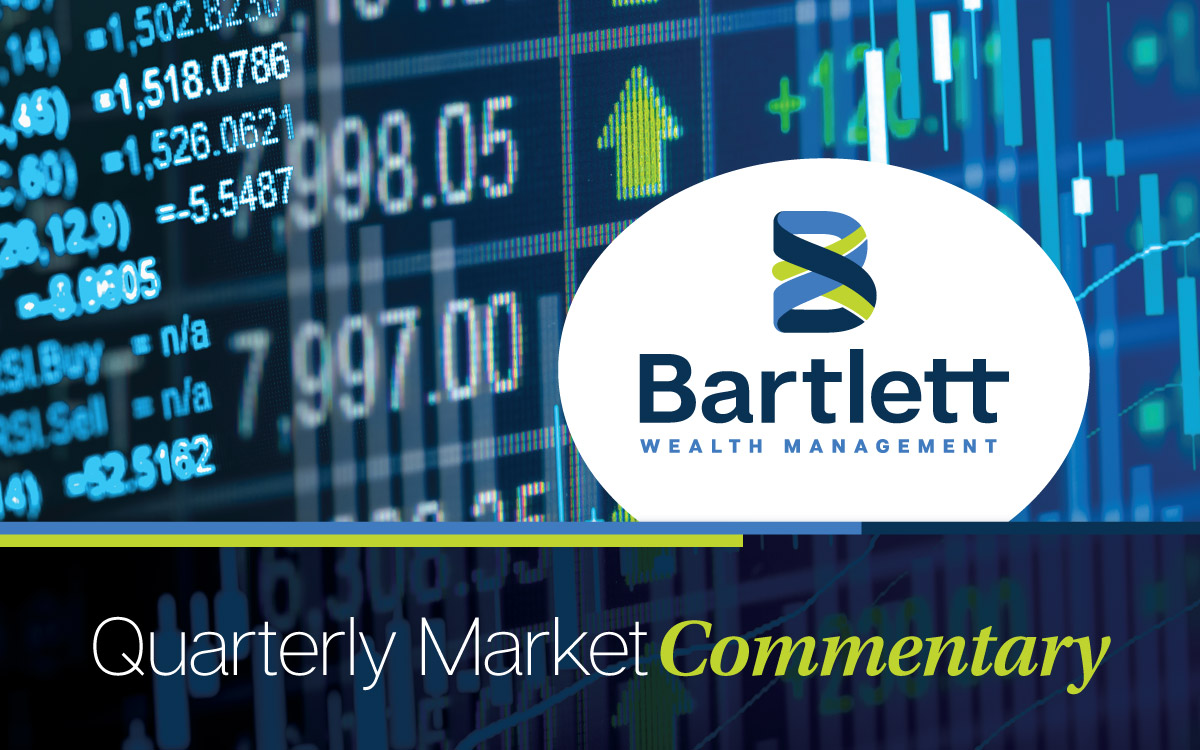Market Commentary ~ April 2019

Beware of Forecasts
The last six months remind us of an old saying that stock market forecasting is like singing. Most of us should only do it in the shower, where nobody will hear us. The first quarter of 2019 was the best quarter in ten years, following a dreadful fourth quarter of 2018 climaxed by the worst December for stocks since 1931. We know of no forecaster who predicted these extremes. Performance for various market benchmarks is summarized below, along with a bond index that shows steady and positive returns from less volatile securities.
Forecasting the economy is no easier. Just ask Jerome Powell. The Chairman of the Federal Reserve Board is arguably the most-informed economic policymaker in the country. Yet in the space of only three months he dramatically recalibrated U.S. interest rate policy. Last fall he anticipated the necessity for ongoing rate increases in 2019, expecting a robust and strengthening economy. Only three months later, in January, he pivoted to a more cautious approach, keeping interest rates low, to support growth amid nascent slowdowns here and abroad.
Recession Alert?
There have been many “recession scares” since the last downturn ended in 2009 following the financial crisis. Some of the more memorable were in summer 2011 (crisis in Europe), autumn 2015 (crashing oil prices), early 2016 (selloff and currency devaluation in China) and late 2018 (Fed raising interest rates, trade standoff with China). Stock market declines of 10 – 20% occurred during all of these episodes.
Another scare, brief so far, was recently aroused by the U.S. Treasury bond market. The normal pattern is for bonds of longer maturities to provide higher yields, compensating investors for more price variability and greater inflation risk. In rare instances this pattern is reversed, a so-called “inverted yield curve” when some short-term securities yield more than long-term securities. An “inversion” is significant because, if it persists, it impairs bank profit margins (banks pay depositors based on short-term interest rates and lend to borrowers based on long-term interest rates). Lower bank profitability in turn discourages lending, which is vital for economic growth. So it is that an inverted yield curve has preceded all seven U.S. recessions since 1960. The latest inversion, the first since 2007, occurred in March when the
90-day Treasury bill yield exceeded the yield on the 10-year Treasury bond.
Though every post-1960 recession was preceded by an inversion, not every inversion was followed by a recession. There have been false alarms, most recently a few times in the 1990s. Like all indicators, it is not foolproof.
Other measures – such as the Index of Leading Economic Indicators (LEI) – are in more favorable condition, suggesting continued economic expansion but at a slower pace of 2 – 2.5% following robust 3% economic growth in 2018. We think the “slowdown but not a slump” hypothesis is reasonable, but only time will tell.
Managing Risk
Bartlett professes no advantage in economic forecasting. If accuracy is elusive for the Fed Chairman – supported by a veritable army of analysts tracking every conceivable business indicator – we can’t expect to fare any better. But we know the current economic growth cycle – almost 10 years in duration – is now the longest in U.S. history. We don’t need complicated statistics to recognize the cycle is in a later stage which means risk is higher.
A historical perspective, rather than forecasting prowess, keeps us alert to managing risk.
- Based on history, a normal amount of market volatility means the next year could feature a few 5% setbacks and a 10% correction. For those relying on portfolio distributions, anticipated requirements over the next year should be covered by a combination of cash, projected interest and dividend income, and short-term bonds. This is a key protection against stock market volatility.
- History also tells us that “bear market” selloffs exceeding 20% usually occur during recessions or economic slowdowns. Major market downturns are dangerous if eventual distribution requirements require stock sales when prices are low. The best precaution is to have an appropriate level of lower-risk bond and alternative investments, a contingency that should protect from having to sell stocks at inopportune times.
- Even for those prioritizing long-term growth and not relying on portfolio distributions, a well-balanced portfolio should now include some lower-risk assets. Such a portfolio will hold up better in difficult times. Furthermore, it will allow the potential to rebalance (i.e. adding to stocks) when adversity results in lower prices, making selloffs periods of opportunity rather than peril.
With these safeguards in place, good long-term investments can be maintained, minimizing the costly “behavioral penalty” of selling low during market declines.
More Expertise
Since our last report, two more professionals joined Bartlett. Simon Lawson and Michael Vassar both have the Certified Financial Planner™ accreditation. Their arrival brings our CFP® total to six, and we will soon have seven as Catherine Miller’s certification is in process. Twelve of our professionals have the Chartered Financial Analyst (CFA) accreditation and two are Certified Public Accountants (CPA). Supported by a terrific administrative staff, we feel great about our capacity to deliver comprehensive wealth management services.
Final Comments
We love our profession and know our work is made possible by your loyalty. We are very grateful for your confidence. Bartlett is aiming for another year of high client retention (98% is our goal) while adding new business at a steady pace. We hope you will recommend us to family, friends, and associates who could benefit from our services.


